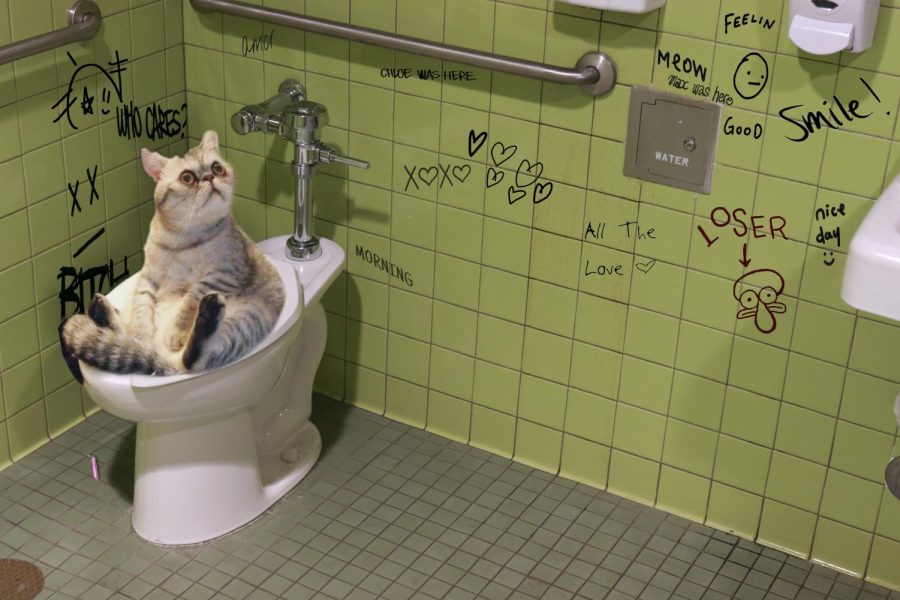Why Flushing Cat Poop Down Your Toilet Isn't a Good Idea - Advice for Proper Handling
Why Flushing Cat Poop Down Your Toilet Isn't a Good Idea - Advice for Proper Handling
Blog Article
This great article in the next paragraphs relating to How to Dispose of Cat Poop and Litter Without Plastic Bags is fairly informative. You should check it out.

Introduction
As pet cat proprietors, it's vital to bear in mind exactly how we dispose of our feline close friends' waste. While it may appear convenient to purge pet cat poop down the toilet, this practice can have detrimental consequences for both the atmosphere and human health and wellness.
Environmental Impact
Purging feline poop introduces harmful virus and parasites right into the water, presenting a significant threat to water communities. These impurities can negatively influence aquatic life and concession water quality.
Health and wellness Risks
In addition to environmental issues, purging pet cat waste can also posture wellness risks to people. Pet cat feces might include Toxoplasma gondii, a bloodsucker that can create toxoplasmosis-- a potentially serious disease, especially for expecting ladies and people with weakened body immune systems.
Alternatives to Flushing
Thankfully, there are safer and more liable methods to dispose of pet cat poop. Think about the adhering to options:
1. Scoop and Dispose in Trash
One of the most common approach of throwing away cat poop is to scoop it right into a biodegradable bag and throw it in the garbage. Be sure to utilize a dedicated litter scoop and take care of the waste without delay.
2. Use Biodegradable Litter
Opt for biodegradable cat clutter made from products such as corn or wheat. These clutters are eco-friendly and can be safely thrown away in the trash.
3. Bury in the Yard
If you have a lawn, think about burying feline waste in a marked location far from veggie gardens and water resources. Make sure to dig deep sufficient to prevent contamination of groundwater.
4. Install a Pet Waste Disposal System
Invest in an animal garbage disposal system particularly created for feline waste. These systems utilize enzymes to break down the waste, decreasing smell and environmental influence.
Final thought
Accountable animal possession extends past giving food and shelter-- it also includes correct waste management. By refraining from purging feline poop down the commode and going with alternate disposal techniques, we can minimize our environmental footprint and secure human wellness.
Why Can’t I Flush Cat Poop?
It Spreads a Parasite
Cats are frequently infected with a parasite called toxoplasma gondii. The parasite causes an infection called toxoplasmosis. It is usually harmless to cats. The parasite only uses cat poop as a host for its eggs. Otherwise, the cat’s immune system usually keeps the infection at low enough levels to maintain its own health. But it does not stop the develop of eggs. These eggs are tiny and surprisingly tough. They may survive for a year before they begin to grow. But that’s the problem.
Our wastewater system is not designed to deal with toxoplasmosis eggs. Instead, most eggs will flush from your toilet into sewers and wastewater management plants. After the sewage is treated for many other harmful things in it, it is typically released into local rivers, lakes, or oceans. Here, the toxoplasmosis eggs can find new hosts, including starfish, crabs, otters, and many other wildlife. For many, this is a significant risk to their health. Toxoplasmosis can also end up infecting water sources that are important for agriculture, which means our deer, pigs, and sheep can get infected too.
Is There Risk to Humans?
There can be a risk to human life from flushing cat poop down the toilet. If you do so, the parasites from your cat’s poop can end up in shellfish, game animals, or livestock. If this meat is then served raw or undercooked, the people who eat it can get sick.
In fact, according to the CDC, 40 million people in the United States are infected with toxoplasma gondii. They get it from exposure to infected seafood, or from some kind of cat poop contamination, like drinking from a stream that is contaminated or touching anything that has come into contact with cat poop. That includes just cleaning a cat litter box.
Most people who get infected with these parasites will not develop any symptoms. However, for pregnant women or for those with compromised immune systems, the parasite can cause severe health problems.
How to Handle Cat Poop
The best way to handle cat poop is actually to clean the box more often. The eggs that the parasite sheds will not become active until one to five days after the cat poops. That means that if you clean daily, you’re much less likely to come into direct contact with infectious eggs.
That said, always dispose of cat poop in the garbage and not down the toilet. Wash your hands before and after you clean the litter box, and bring the bag of poop right outside to your garbage bins.
https://trenchlesssolutionsusa.com/why-cant-i-flush-cat-poop/

Do you really like reading up on Don’t flush cat feces down the toilet? Try leaving feedback below. We would be interested to know your views about this piece. We are looking forward that you come back again before long. Liked our review? Please share it. Help others discover it. Thanks a bunch for your time. Kindly pay a visit to our blog back soon.
About Report this page